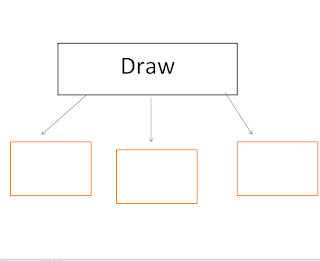Drawing Conclusions
I know I am not the only teacher out there who when asking how to draw a conclusion, gets the response "you need to draw a picture." In my case, it makes perfect sense! I teach the kids all year to draw to show your understanding of a concept. However, when they see that as a test question - drawing a picture is not an option, right?
So to address this idea, my teammates and I decided to start with the fact that draw is a multiple meaning word. I started with a graphic organizer with the word draw in the top box.
Then, we brainstormed all the meanings of draw - to draw a picture, to draw a card, to draw blood, to draw the blinds, etc... One of my kids said "underwear...you know drawers!" Ha ha.. don't worry I cleared it up!
We talked about the fact that draw means to pull out in many situations. The same is true when you draw a conclusion. You are pulling out information from an experiment that you have finished or a text you have read.
I predefined what the science terms mean with a science word chart.
Then they were given a baggie of materials to test in the circuit. The materials would be placed one at a time where the switch connects to complete the circuit. These were the same objects we tested as being attracted to a magnet by the way and so many kids were convinced the same materials would work as conductors. Of course, that was not the case.
They explored and tested and recorded their data on a T chart. They were surprised that all metals worked in the circuit - not just iron and steel.
When we finished it was time to "draw a conclusion". To help them with this idea we looked back at our question and our data. I wrote a sentence frame for students who felt like they needed extra support (ESL, SPEC ED, ADHD, etc...) We also talked about the fact that wood does not complete a circuit, but also would not be a good insulator due to fire risks. They got that pretty easily!
I conclude that ________________ materials conduct electricity. Insulators can be made of __________________________________________.
Hope this example helps you out!
Comment:
So to address this idea, my teammates and I decided to start with the fact that draw is a multiple meaning word. I started with a graphic organizer with the word draw in the top box.
Then, we brainstormed all the meanings of draw - to draw a picture, to draw a card, to draw blood, to draw the blinds, etc... One of my kids said "underwear...you know drawers!" Ha ha.. don't worry I cleared it up!
We talked about the fact that draw means to pull out in many situations. The same is true when you draw a conclusion. You are pulling out information from an experiment that you have finished or a text you have read.
Example from the classroom...
We have been working on conductors and insulators in my science class. We started with a question: What materials conduct electricity or insulate electricity? I predefined what the science terms mean with a science word chart.
| Science words | What they mean |
| Conductor insulator | Allows electricity to flow through it No electricity flows through it |
Then they were given a baggie of materials to test in the circuit. The materials would be placed one at a time where the switch connects to complete the circuit. These were the same objects we tested as being attracted to a magnet by the way and so many kids were convinced the same materials would work as conductors. Of course, that was not the case.
They explored and tested and recorded their data on a T chart. They were surprised that all metals worked in the circuit - not just iron and steel.
When we finished it was time to "draw a conclusion". To help them with this idea we looked back at our question and our data. I wrote a sentence frame for students who felt like they needed extra support (ESL, SPEC ED, ADHD, etc...) We also talked about the fact that wood does not complete a circuit, but also would not be a good insulator due to fire risks. They got that pretty easily!
I conclude that ________________ materials conduct electricity. Insulators can be made of __________________________________________.
Hope this example helps you out!
Comment:




